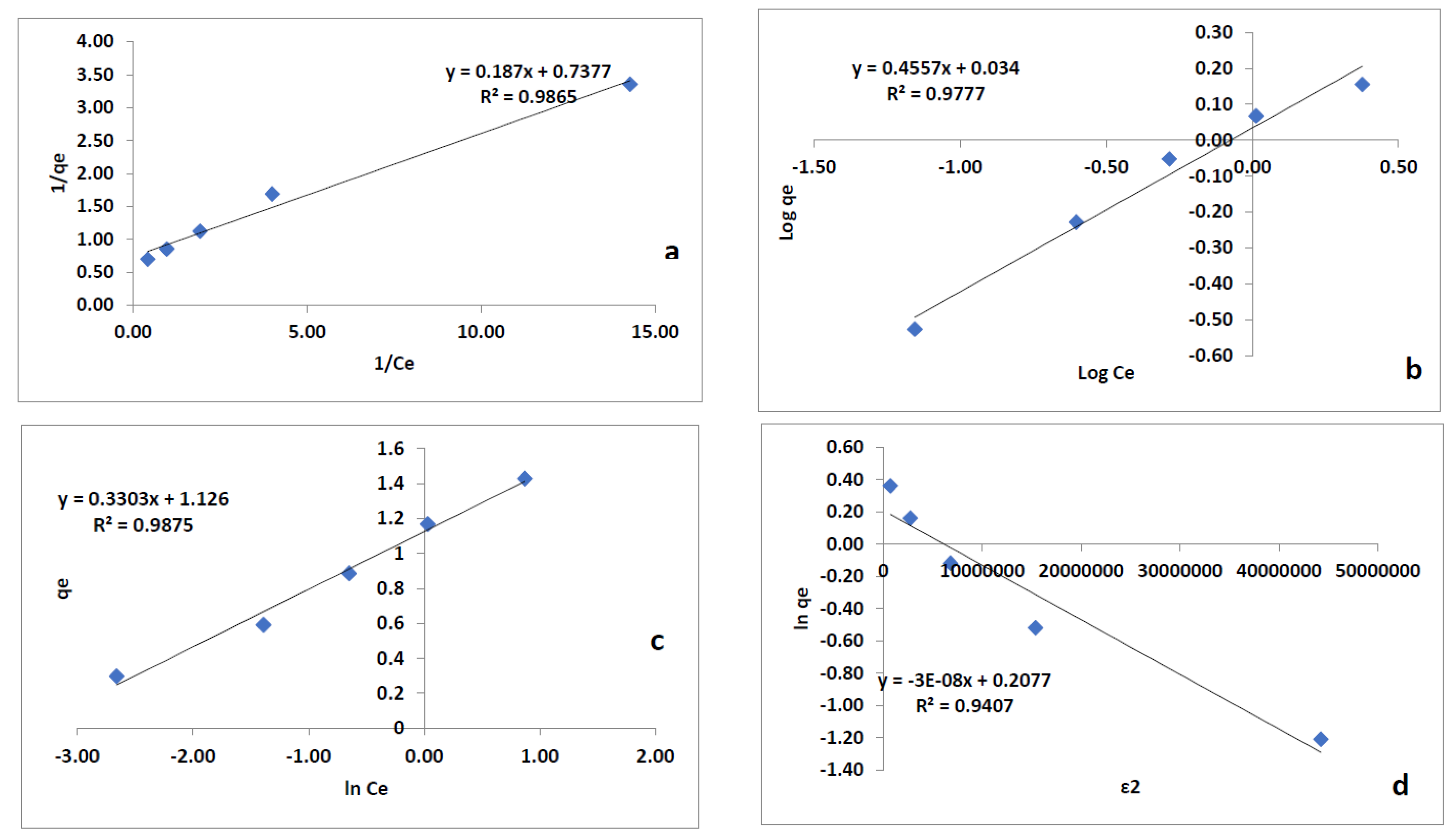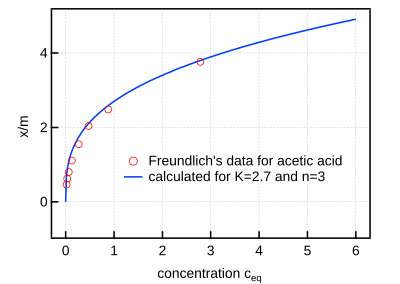Then use the t-plot method to find the non-micropore area (so-called 'external area') micropore area being the difference between it and the BET area. Make sure the data points used for t-plot are. Using the t-method, adsorption data can be plotted as a t-curve: the volume of nitrogen adsorbed vs. T, the statistical thickness of an adsorbed layer on a nonporous reference surface at a corresponding relative pressure. Adsorption decreases with increase in temperature. More surface area more is the rate of adsorption. Adsorption also depends on concentration of solute in a solution. Adsorption also depends on nature of adsorbate and nature of adsorbent. Freundlich explains the adsorption from solution phase using concentration of the solution instead of pressure. (a) t-plot for nitrogen adsorbed at 77 K in a mechanical mixture of 20 wt% FAU and 80 wt% Al-MCM- 41 (the inset shows the nitrogen adsorption isotherm at 77 K which was used to obtain the t-plot). Indian Institute of Technology Kanpur.
- T-plot Adsorption
- T Plot Adsorption Definition
- T Plot Adsorption Meaning
- T Plot Adsorption Isotherm

Contents
Adsorption Isotherm

The adsorption on a given surface generally increases with increase in pressure (for gases) and concentration (for solutions) at a constant temperature.
The extent of adsorption of a gas per unit mass of adsorbent depends upon the pressure of the gas. The relation between the amount of substance adsorbed by the adsorbent and the equilibrium gas pressure (or concentration for solutions) at constant temperature is called an adsorption isotherm.
The extent of adsorption is usually expressed as x/m where x is the mass of adsorbate and m is the mass of the adsorbent.
The extent of adsorption (x/m) increases with pressure and becomes maximum corresponding to pressure ps called equilibrium pressure. Since adsorption is a reversible process, the desorption also takes place simultaneously. At this pressure (ps) the amount of gas adsorbed becomes equal to the amount of gas desorbed so that the extent of adsorption becomes constant even though the pressure is increased. This state is also called saturation state and ps is called saturation pressure.
Freundlich Adsorption Isotherm
The variation of extent of adsorption (x/m) with pressure (p) at a particular temperature was given mathematically by Freundlich in 1909.
(i) At low pressure, the graph is almost straight line which indicates that x/m is directly proportional to the pressure.
x/m ∝ pz
x/m = Kp
T-plot Adsorption
where K is constant.
(ii) At high pressure, the graph becomes almost constant which means that x/m becomes independent of pressure. This may be expressed as:
x/m = constant
x/m ∝ p0
x/m = K p0
(iii) Thus, in the intermediate range of pressure, x/m will depend upon the power of pressure which lies between 0 to l i.e., fractional power of pressure (probable range 0.1 to 0.5).
where n can take any whole number value which depends upon the nature of adsorbate and adsorbent. The above relationship is also called Freundlich’s adsorption isotherm.
Calculation of K and n of adsorption isotherm

Taking logarithms on both sides of Equation, we get
Log {x/m} =log K + 1/n log p
If we plot a graph between log (xlm) on y-axis (ordinate) and log p, on x-axis (abscissa), straight line will be obtained. The slope of the line is equal to 1/n and the intercept is equal to log K.
Freundlich’s adsorption isotherm fails at high temperature.

Adsorption Isobars
With the increase in temperature at constant pressure the extent of adsorption (x/m) will decrease. The graph between extent of adsorption and temperature at constant pressure is called adsorption isobar.
In case of chemisorption, the adsorption initially increases with rise in temperature and then decreases. Like all chemical reactions, some activation energy is required for chemisorption.
b) As temperature is increased the molecules of the adsorbate gain energy and become equal to activation energy so that proper bonds are formed with the adsorbent molecules.
c) Therefore, initially amount of gas adsorbed increases with rise in temperature. Further
increase of temperature will increase the energy of molecules which have already been adsorbed.
T Plot Adsorption Definition
d) This would increase the rate of desorption and, therefore, decrease the extent of adsorption.
The adsorption isobar graphs can be used to distinguish between physical and chemical adsorptions. In physical adsorption, there is a regular decrease as temperature increases. However, in chemisorption, there is initial increase and then it decreases.

Adsorption from solution
The process of adsorption can take place from solutions also.
1) When solution of acetic acid in water is shaken with charcoal, a part of the acid is adsorbed by charcoal and therefore, the concentration of acetic acid decreases in the solution.
2) When magnesium is precipitated as magnesium hydroxide, in the presence of magneson reagent, it attains blue colour. The colour is due to adsorption of magneson.
3) The litmus solution when shaken with charcoal becomes colourless because of adsorption from solution phase.
Solid adsorbents adsorb certain solutes from solution in preference to other solutes and solvents.
For example : animal charcoal decolourises impure sugar solution by adsorbing colouring dye in preference to sugar molecules.
The following observations are made in case of adsorption from solution phase:
(1) The extent of adsorption depends upon the concentration of the solute in the solution. It increases with increase in concentration of solute in the solution.
(2) The extent of adsorption decreases with increase of temperature.
T Plot Adsorption Meaning
(3) The extent of adsorption also depends upon the nature of adsorbent and adsorbate.
(4) The extent of adsorption increases with an increase in the surface area of the adsorbent.
The Freundlich’s adsorption isotherms obtained for the adsorption of gases on the surface of solid adsorbents have also been found to be approximately applicable to the adsorption of solutes from the solutions. Here, the equilibrium pressure in the adsorption of gases has been replaced by the equilibrium concentrations (c) of the adsorbates in solution.
T Plot Adsorption Isotherm
The adsorption isotherm may be represented as:
x/m = Kc1/n
Taking log, it becomes
log {x/m}= log K + 1/n log c
A graph between x/m and c has been found to be similar to one shown for x/m and p for gases on solid . From the graph, the values of 1/n and log k can be calculated as slope and intercept respectively.




